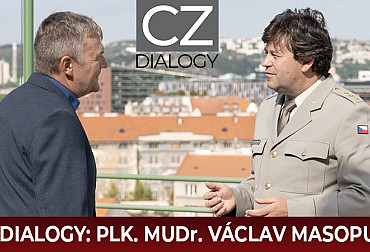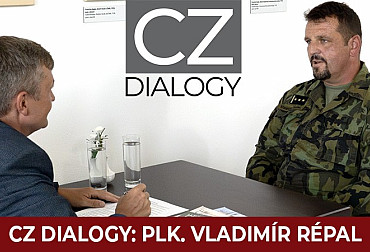Gen. Rudolf Straka: Achieving full operational capability of the new helicopters is a matter of up to two years
The 22nd Helicopter Base near Náměšť nad Oslavou is part of the Czech Air Force. It is intended to provide direct air support and security for ground forces, air transport, aeromobile operations, visual reconnaissance and CASEVAC tasks. The main tasks of the base include air training of helicopter crews, forward air controllers and other Air Force specialists for deployment in the Czech Republic and abroad. At present, the base is gradually upgrading its equipment to the American AH-1Z Viper attack helicopters and UH-1Y Venom multi-purpose machines. The base also includes a new H-1 Simulation Centre designed for training pilots of the new helicopters. The base commander is Brigadier General Rudolf Straka, with whom we discussed not only the new equipment, but also the overall readiness of the base for current and future challenges and tasks in our discussion programme CZ DIALOGUES.
Video: Interview with Brigadier General Rudolf Straka, Commander of the 22nd Helicopter Base / CZ DEFENCE
According to the commander of the 22nd Helicopter Base, the replacement of Mi-24/35 Hind helicopters is logical because they no longer meet the needs of the army, and with the new type of helicopters, the Czech Armed Forces will move towards the 21st century. This is already confirmed by the so-called White Paper on Defence, which in 2009 identified these machines as inadequate due to outdated avionics, poor ballistics and non-interoperability with NATO units. This is why the transition to a new type of helicopter is being made. However, the gradual transition alone does not mean that the base is 'standing still'. On the contrary, normal training is taking place, soldiers are taking part in military exercises, and new helicopters are gradually being commissioned as planned. "Today we have a total of eight helicopters - four AH-1Z Viper helicopters and four UH-1Y Venom helicopters. We expect the last four units this year, preferably in the first half of this year, so that the complete delivery is completed," says General Straka.
Helicopter crews and trained ground personnel are already working intensively with the received US machines. These are personnel who previously received training in the United States. A milestone for the 22nd Helicopter Base will be the inclusion of the new machines in NATO force training. However, this will take some time. "We are at the beginning. We are still waiting for the remaining machines and we will see how the pace of training can be maintained. At the moment the training is being done with American instructors who are under a contract signed between the governments. When we get some of our personnel trained to the instructor level, they will join the training. We expect an acceleration of training," General Straka plans.
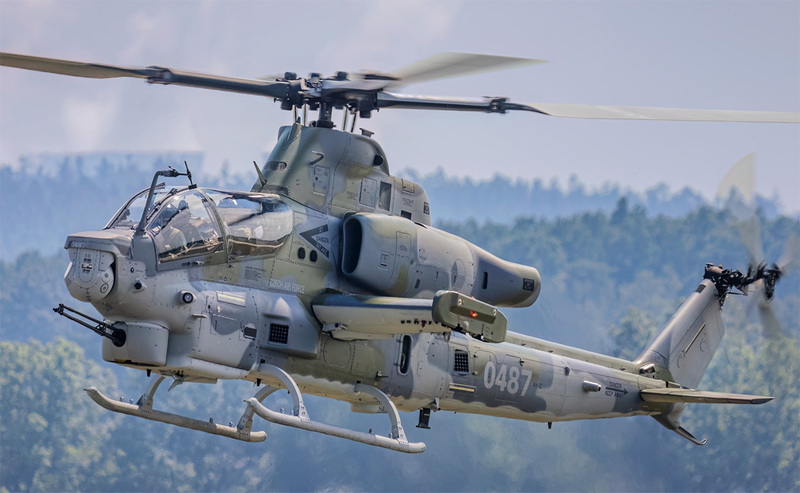
Infrastructure is also an important parameter for the introduction of new equipment in the form of American helicopters into the capabilities of the Czech Armed Forces. Therefore, we were interested in how the massive reconstruction of the facilities on the base was in this context. "The infrastructure was more or less ready. The only thing that needed to be done was to build a hall for the simulator. This was undertaken by the state enterprise LOM PRAHA and the simulator, which is owned by the army, has already been installed," says the base commander, adding that he also envisages expanding the capabilities in the future in the scope of repair activities. If this ambition were to come to fruition, it would mean building hangars in which this work could be carried out. "And of course, with the intention of expanding the H-1 system fleet, we will probably need some shelters for these helicopters in the future," says General Straka.
We also asked about the selection process and the qualitative evaluation criteria for the new machines. "I take it operationally. We are talking about the whole system, where there are two helicopter platforms, plus a simulator and other equipment. The selection process took place over several years. For this type, the contract was signed in 2019, but the start of the surveys and the selection of the new platform happened in 2013, so it's a long process," the base commander says.
Armament is also an important element of the new helicopter platform. For the Viper attack helicopter, there is a marked shift from the previous armament on the Mi-24/35 Hind. "It offers us the use of Hellfire anti-tank missiles and Hydra unguided missiles, where these missiles come in two modifications - with a conventional warhead and a laser-guided warhead. Also, a 20mm cannon and an integrated system at a very high level of range of up to twenty kilometres. So, the armament is really excellent for us," explains General Straka the difference from the armament of previous types of attack helicopters.
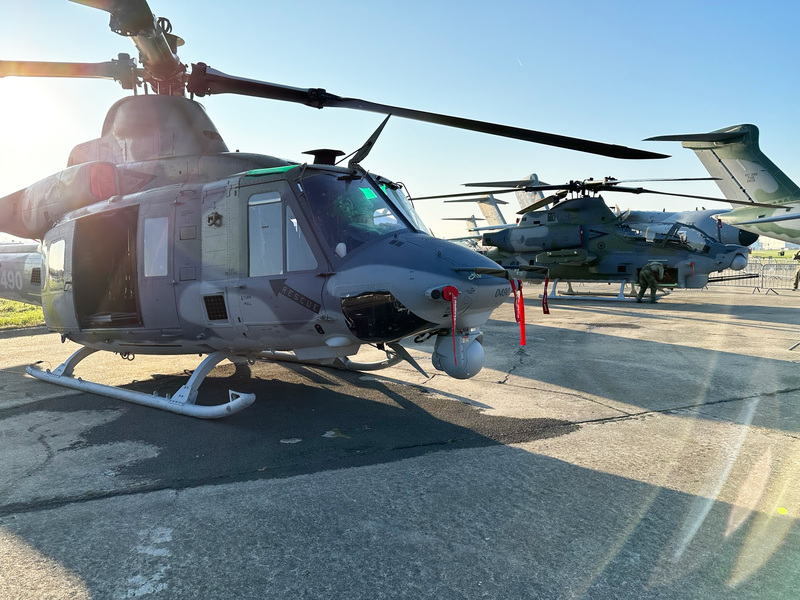
"As I indicated, their range, their use of weapons and accuracy of use and the whole weapons system is on a whole other level. The other capability is the equipment itself, where you have a digital cockpit, see-through displays, helmet sights with integrated with other systems, so those capabilities take us forward in terms of battlefield survivability as well. Even the self-protection systems are already modern and high-level," adds the 22nd Helicopter Base commander.
It may sound surprising to some people that the new Viper helicopters are "attack" type. According to General Straka, this fits in with the defence strategy of the Czech Republic. Sometimes we got into a situation that as the clientele expanded, the requirements for what the new helicopter could do increased. At one point the military looked foolish that such a helicopter didn't even exist. We were looking for a multi-purpose helicopter. But the truth is that some capabilities simply cannot be replaced. The platform in the combination of the AH-1 and UH-1 offers more variability, and most importantly, it is targeted, so it is for supporting ground forces," General Straka describes the helicopters' capabilities.
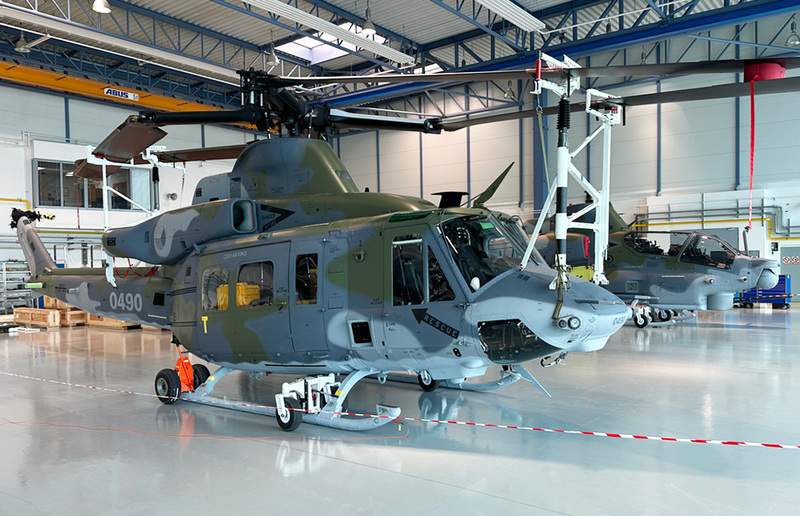
We were also interested in the technical characteristics of the new machines, which were said to be unable to work in low visibility and to have problems with operation in freezing weather. General Straka commented on this topic as follows. Of course, it is true that this helicopter does not have rotor blade heating, but some other helicopters that are used in the world do not have this. The properties of the carbon composite blades that are there allow us to shake off the icing vibrations, but the first and foremost thing is that we avoid the conditions of flying in icing," explains the general.
The role of the helicopter air force will not change after the modernisation, nor after the strategic defence documents adopted by the country. "The concept is a vision, it is a direction. As we prepare for the tasks given to us for the benefit of the ground and special forces, there is no need to address the concept in this direction. Of course, we see how the security situation is changing, and therefore the concept can always be reconsidered," General Straka said.

We asked whether the acquisition of the H-1 helicopters is in line with the change of perspective on the development and modernisation of the army and the preparation for the next conflict. "Yes and no. Of course, as much as there are studies about future conflicts, we know ourselves that the dynamics of development have been terribly fast in recent years. It's hard to predict. In any case, the system we have will meet the requirements of our brigade groups and for them, I think, they are sufficient," the base commander assesses.
The Czech Republic is very often referred to in the defence strategy and within the Alliance structures as a country that will play the role of "Host Nation Support". We wondered whether the 22nd base is ready for this activity. "Any Alliance helicopter can land here. Of course, as an airport with a concrete runway, we are ready or are preparing to receive the so-called winged alliance units," confirms General Straka.
As stated by the Chief of the General Staff of the Czech Army, General Rehka, we are no longer satisfied with the commitment of only one heavy brigade for the Alliance. Should any threat arise, the full potential of the Army of the Czech Republic will be used, in addition to the forces ensuring the operation and defence of the state. In this context, we asked General Straka when the new machines will reach full operational deployment and whether the total future number of new helicopters is sufficient. "It will definitely take some time before we reach full operational capability. It is a matter of up to two years. Of course, training will be ongoing and we will be ready for some sub-tasks much sooner. And the assignment will depend on what kind of tasks the task forces will perform," General Straka said in the interview, adding that we currently have a sufficient number of machines. The current leadership of the Ministry of Defence has also managed to arrange a donation, thus completing the original fleet. A few years ago, we thought we would have enough. Now it turned out that it would not be enough," says Brigadier General Rudolf Straka, commander of the 22nd Helicopter Air Base.
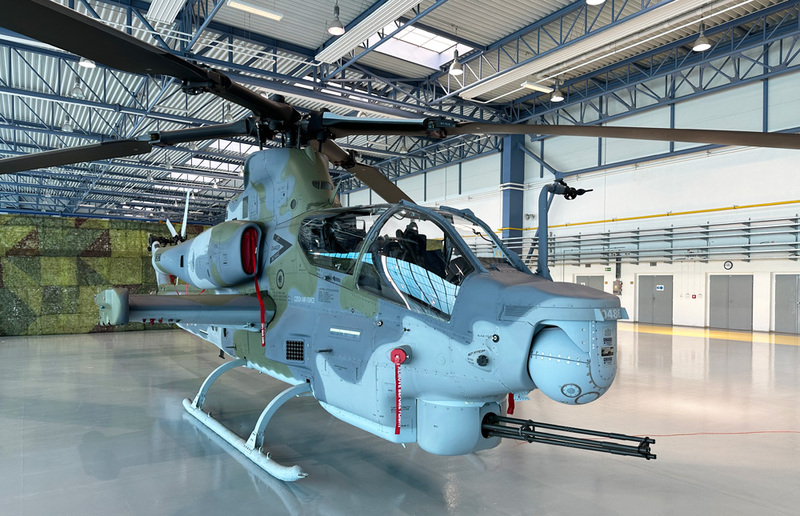
During the interview we also discussed other possible deployments of the Czech Armed Forces helicopters, training of pilots and ground personnel, the level of cooperation of Czech defence industry companies, and where the decommissioned Mi-24/35 Hind machines will go. If you want to learn more, listen to the full interview at the beginning of this article.















